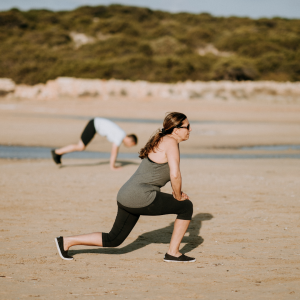
High Intensity Interval Training, otherwise known as HIIT, has become increasingly trendy lately. The good news is that this trend is actually backed by science. HIIT workouts are made up of short periods of high intensity exercise, followed by short periods of active recovery or rest. This style of workout has been shown to increase cardiovascular fitness, as well as improve blood pressure, insulin sensitivity, and cholesterol levels.
HIIT workouts can be modified for any number of exercise styles and durations. Some HIIT workouts follow a pattern of 30 seconds work and 30 seconds rest. Others use a longer approach of 2-4 minutes of work with an equivalent amount of rest. Exercise intensity can vary; a good rule of thumb is to use the “talk test.” For HIIT activity, you should be at a point where it would be difficult to carry on a conversation while moving.
Because HIIT can come in so many shapes and sizes, it might take some experimentation to find the right formula for you. I have included some examples of bodyweight HIIT circuits below, but any bodyweight or cardio exercises that you enjoy can be incorporated into your own HIIT workout. Check out the American College of Sports Medicine’s 7 Minute Workout for another great style of HIIT.

Examples of 12 Minute Bodyweight HIIT Workouts
3 rounds, 30 seconds of each exercise without stopping. After completing one round, rest for 2 minutes before starting again.
OR
3 rounds, 30 seconds of each exercise with 30 seconds rest in between each.
Example 1:
- Jumping Jacks
- Alternating Lunges
- Plank
- Squats
Example 2:
- High Knees
- Heel Taps
- Push-ups (or modified knee push-ups)
- Side Lunges
Disclaimer: Individuals should seek medical evaluation and clearance from a doctor before beginning any exercise regimen. All activities should be carried out at a pace and intensity that is comfortable for the individual.
You Might Also Enjoy:
5 Tips to Stay Motivated For Exercising at Home
Don’t miss another great blog: Subscribe Now
